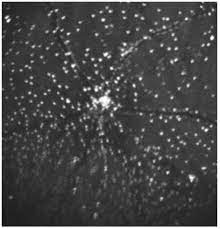
New imaging can detect early signs of Geographic Macular Degeneration
Study findings were recently posted in Progress in Retinal Eye Research that found that Detection of Apoptosis in Retinal Cells (DARC) imagining technology is able to identify areas of the eye that are showing signs of geographic atrophy (GA).
Geographic atrophy causes reduced vision and blindness and develops in people who have the dry form of age-related macular degeneration (AMD). Unfortunately, there are few early detectable symptoms. By the time symptoms develop, vision loss is usually unavoidable.
DARC technology allows eye care providers to visualize the sick and dying cells on the retina by highlighting unhealthy and sick cells. A patient is given an injection in their arm of fluorescent dye into their bloodstream. The dye attaches to retinal cells and illuminates those that are stressed or dying. When the eye care provider conducts a visual exam, the damaged cells appear to be bright white. The higher the number of these highlighted cells, the higher the DARC count.
An AI algorithm that counts and assess the DARC spots allows for consistent results. The DARC test has also proven to be a predictor of glaucoma and new areas of wet AMD.
Researchers screened 113 patients using the DARC method and then followed up the screening with Optical Coherence Tomography (OCT) scans every six months over the course of 3 years. The DARC scans were then compared to the OCT scans to determine whether the DARC method was able to predict geographic atrophy. What researchers found was that DARC was indeed predictive of GA. Larger clinical trials are now being planned that will start later this year.
Andrea Schumann
Andrea Schumann is Customer Service Manager for Vitamin Science and is a regular contributor to the Shop VisiVite Blog. Andrea has a Bachelor of Science degree in Business Administration from Central Methodist University.



![Download [FREE Book Today]](https://no-cache.hubspot.com/cta/default/5009299/d9a95b1e-cc91-49c0-9d4d-0080f765610f.png)

Comments